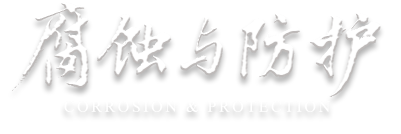Abstract:
Salt spray corrosion tests (35 ℃, 50 g/L NaCl) were conducted at different times (4, 48, 72, 96, 144, 192 h) to simulate marine climate environment. The formation law of rust layer on SPA-H weathering steel with oxide scale and the influence of oxide scale on the rust layer formation process were studied. Use an electrochemical workstation to measure the polarization curves and electrochemical impedance spectra of samples with and without iron oxide scales after salt spray corrosion for different times, and study the effect of iron oxide scales on the corrosion process. The results show that when the salt spray corrosion time did not exceed 48 h, the dense oxide scale acted as a physical barrier, blocking the corrosion of the steel substrate. Continuing to increase the salt spray corrosion time, on the one hand, due to the corrosion damage of the oxide scale, the protective effect on the substrate was weakened. On the other hand, the corrosive solution penetrated into the substrate, forming primary cell corrosion, promoting the formation and stability of the rust layer, ultimately resulting in an increase of about 7 mg in the unit area mass of the sample with oxide scale compared to the sample without oxide scale. The oxide scale on the surface of SPA-H steel blocked corrosion in the early stage of corrosion and accelerated the formation of the rust layer in the later stage of corrosion.

 下载:
下载: